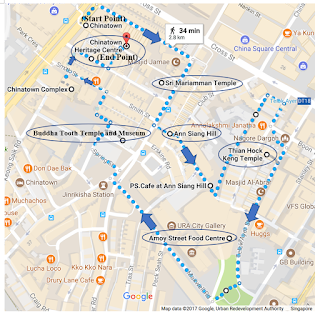Ann Siang Hill
Ann Siang Hill Ann Siang Hill was named a rich Chinese businessman, Chia Ann Siang (1832‒1892). The first name of the hill was named after it’s owner Charles Scott hence the name Scott’s Hill. He was a businessman who managed nutmeg and clove. It was then sold to another businessman called John Gemmill which the hill was renamed as Gemmill’s Hill. Chia Ann Siang was the third businessman who bought over the hill after Gemmill and hence had the hill named after him as well. For Mr Chia, he had his house and estate built on the hill instead using it for other types of businesses. Interestingly, there was a Malay school situated on the hill in the 1800s to provide education to the son of the Temenggong of Johor and royal members who wish to take up their education there. Businesses that were traditionally located here were letter writing, calligraphy and it was known for remittance houses to be set up there where Chinese immigrant workers are able to send money home to...

